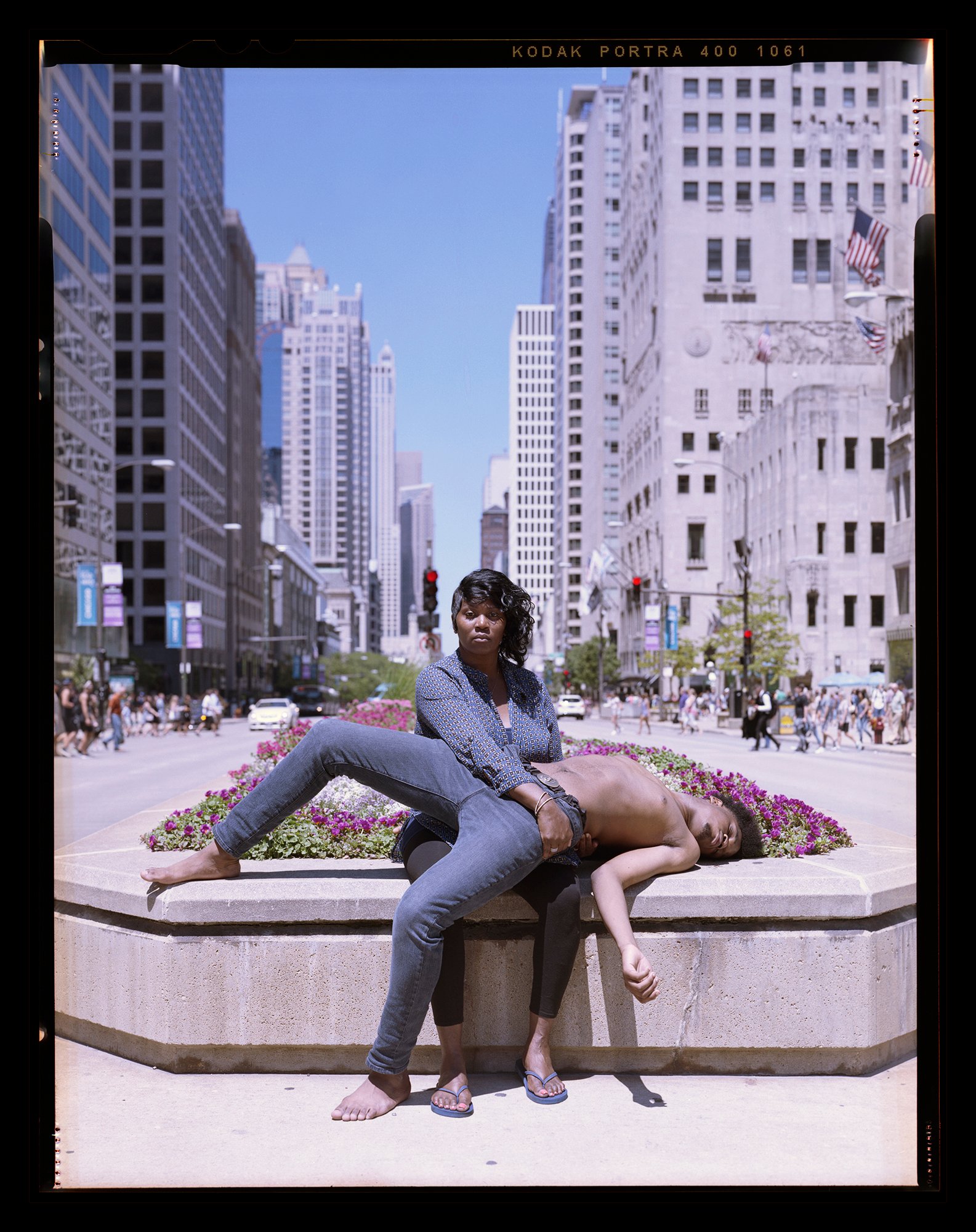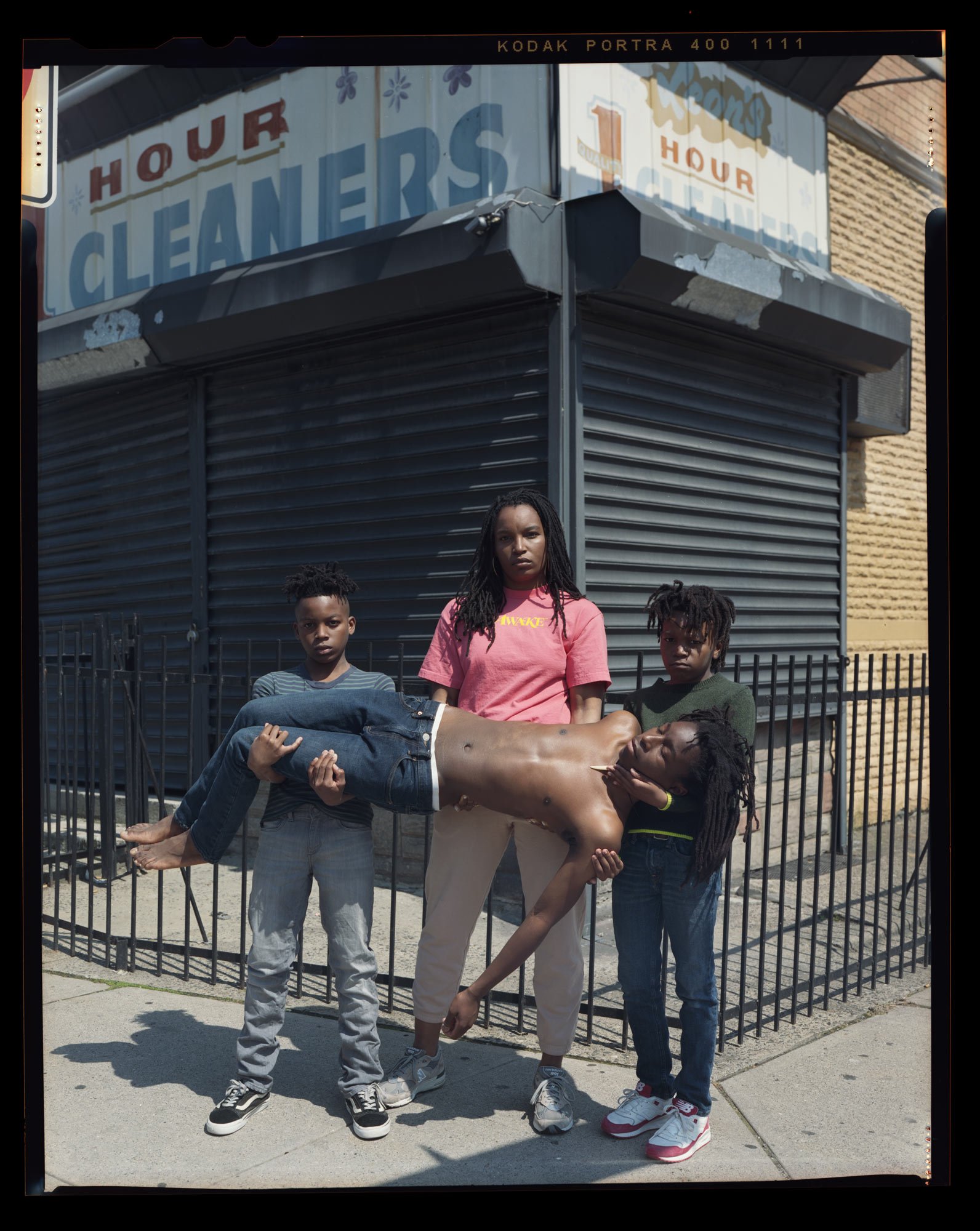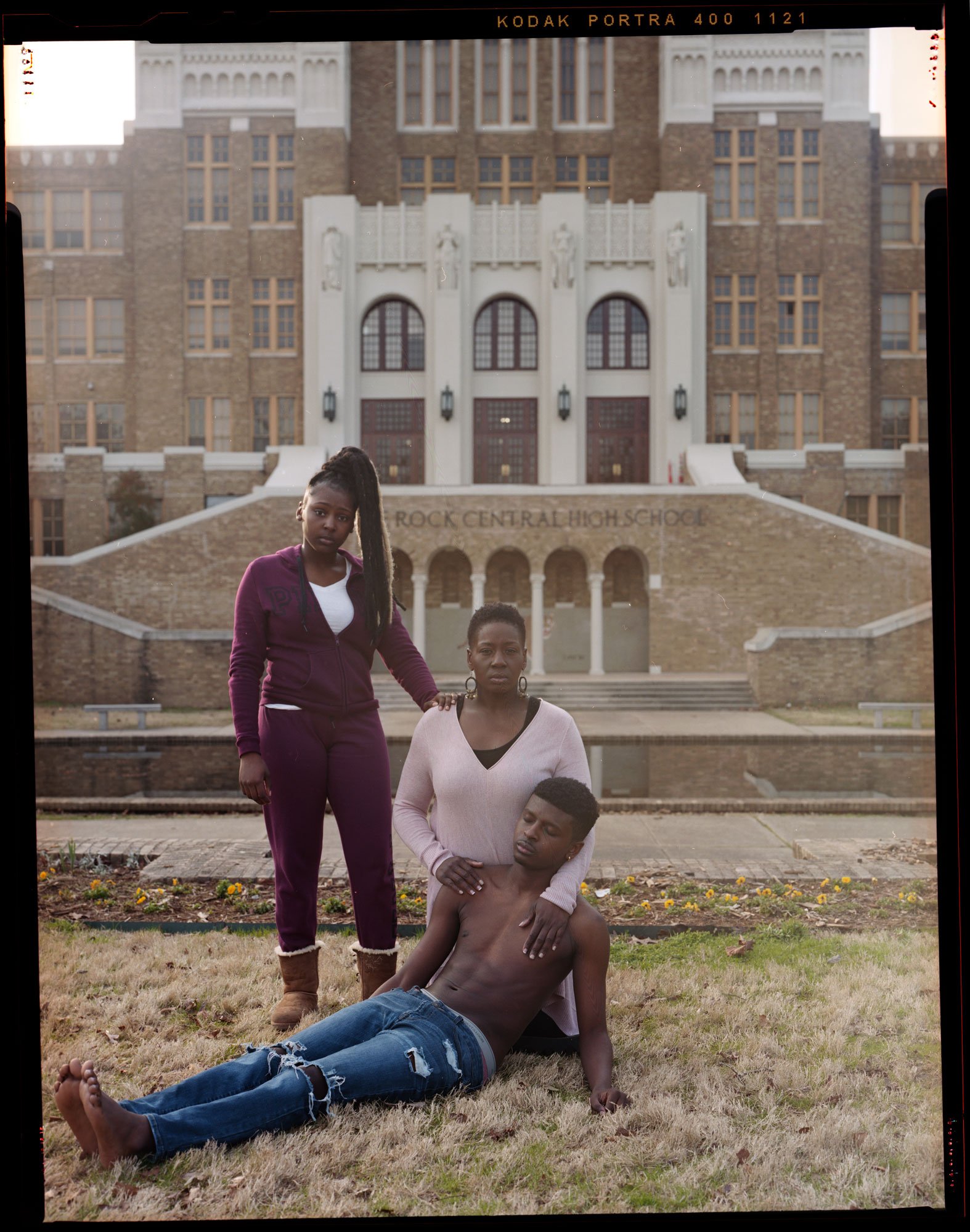The interpretation of the classic Pietà; a son lay bare across the lap of his mother, a throat exposed, a real body with real skin, the gentle protective hand that rests on her sons shoulder, a family carrying the weight of loss. Created in a response to the senseless murders of black men across the nation by police violence, Jon Henry set out to photograph mothers with their sons in their environment, reenacting what it must feel like to endure this pain.
Since its creation in 1499, Michelangelo’s Pietà has inspired emotion, faith, and imitation. Look closely at the marble and it will seem like flesh, the complicated folds of drapery, a head thrown back with a neck exposed to us with incredible vulnerability, a foot hangs in midair, Mary, her left hand open and pointing delicately forward, as if to comprehend his death, the death of her son. Pietà means pity or compassion and represents Mary sorrowfully contemplating the dead body of her son which she holds on her lap. It is important to remember how this sculpture is made, in a messy, loud process much like the emotional trauma suffered by the loss of a mother’s child. “Lost in the furore of media coverage, lawsuits and protests is the plight of the mother. Who, regardless of the legal outcome, must carry on without her child.“
A visual artist working with photography and text, from Queens NY, Jon Henry, known foremost for the cultural activism in his work, reflects on family, socio-political issues, grief, trauma and healing within the African American community. Created in a response to the senseless murders of black men across the nation by police violence, Jon Henry set out to photograph mother’s with their sons in their environment, reenacting what it must feel like to endure this pain. “The mother’s in the photographs have not lost their sons, but understand the reality, that this could happen to their family, The mother is also photographed in isolation, reflecting on the absence. When the trials are over, the protesters have gone home and the news cameras gone, it is the mother left. Left to mourn, to survive."
Jon Henry reinterprets the classic Pietà; a son lay bare across the lap of his mother, a throat exposed, a real body with real skin, the gentle protective hand that rests on her sons shoulder, a family carrying the weight of loss. These images, accompanied with quotes describing their thoughts and focusing on the mother son relationship depict and examine the tragedy and the nature of a mother’s suffering, although their sons are alive in Henry’s series, these mother’s share their constant state of precarity and the precious existence of their children. The title of the project is a reference to the song “Strange Fruit.” That instead of black bodies hanging from the Poplar Tree, these fruits of families, and communities, are being killed in the streets. “I was interested in taking portraits of the mother’s looking away from camera, as a way for the viewer to try to get into their mind. In some of the images there is an obvious presence missing. In some there is none, but it is a connection to the mother’s who have lost their sons. What does normal look like after the tragedy? How do these families process everyday activities after these horrible events? I direct these images based on the environment that the families live/work near.“
The powerful images from this series have been exhibited across New York City’s pay-phones through Art in Ad Places a campaign replacing outdoor advertising with artwork. “I’ve been interested in public installation ever since seeing the work of Felix Gonzalez Torres. The work is fine art and gets exhibited in galleries, but that is not the sole audience for the work. I wanted to be able to reach people who do not enter those spaces and share it publicly. The feedback was positive from those who reached out, but it was not important to hear from everyone. I was more interested in passerbys encountering this work on such a scale to give them some pause. It is definitely a departure from how the black body is viewed in a public space (ie advertising or other).“
Stranger Fruit and the themes and stories covered in Henry’s work are not new, to the shame of our modern society loss of life continues, as does the exploration of Henry’s work, “It’s mentally taxing. I wish we didn’t have to speak about this constantly but until necessary changes are made, we will continue. It is great that the work is being shared widely during this time, but the larger issues remain. This issue must be addressed honestly and proactively. We cannot wait.“


